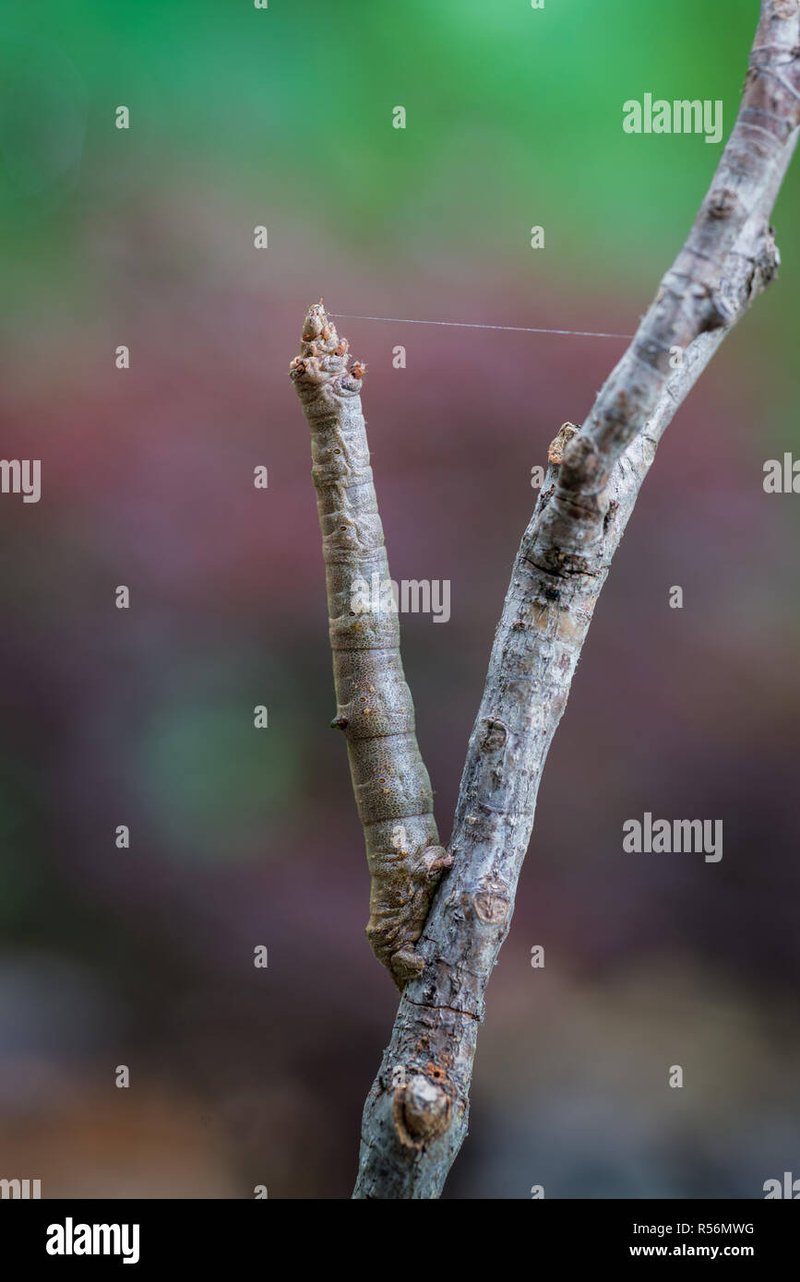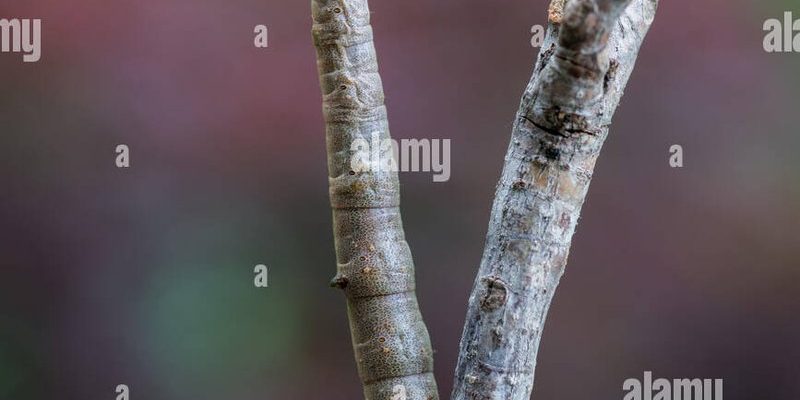
Inchworms, also known as measuring worms, belong to the caterpillar stage of certain moths. While they may look like ordinary caterpillars, their silk trails are a notable feature that plays a significant role in their survival. So let’s dive into the world of inchworms and explore why these tiny creatures spin silk and how they use it to guide their journey.
What Are Inchworms?
Inchworms are the larvae of geometer moths, a name that comes from the Greek word “geometra,” meaning “earth measurer.” These little critters are called inchworms because of the unique way they move: they take a looped stance, drawing their bodies forward, which indeed looks like they’re measuring their way across the terrain.
You might be wondering what they look like. Generally, inchworms are slender and can vary in color from green to brown, helping them blend in with their surroundings. This camouflage is one of their survival strategies, making it hard for predators to spot them. They’re typically found in gardens, woods, and fields, munching on leaves as they get ready to transform into moths.
The Purpose of Silk Trails
When you see an inchworm’s silk trail, you might think it’s just a random bit of silk left behind. However, this silk has important functions. First and foremost, it helps inchworms move more efficiently. By producing silk, they can create a kind of safety net. If they lose their grip on a branch or leaf, the silk can catch them, preventing a nasty fall.
Additionally, the silk trails serve as a visual marker for the inchworm. Just like how we use breadcrumbs to find our way back, inchworms can follow their own silky path. This is particularly useful when they’re in unfamiliar territory, making it easier to navigate back to a safe spot.
How Do Inchworms Produce Silk?
You might be curious about how inchworms create their silk. Unlike silkworms, which are famous for their large amounts of silk, inchworms produce a smaller, more delicate strand. They have specialized glands that secrete a protein-based substance which dries quickly when exposed to air, forming silk.
This process is a bit like squeezing toothpaste from a tube. The inchworm contracts its glands, releasing the silk, and uses its body to manipulate the strands. It’s pretty impressive when you think about it! These strands are not just for movement; they also play a role in the inchworm’s life cycle.
Navigating with Silk: The Inchworm’s Guide
Imagine you’re lost in the woods. What would you use to find your way? A map? A GPS? For inchworms, their silk trail is like a personal navigation system. When an inchworm begins its journey across branches and leaves, it produces silk that guides its steps.
As they crawl, the silk trail helps them maintain a sense of direction. If they ever need to retrace their path—say, if they encounter a predator or run out of food—they can follow the shiny threads back to safety. This ability is crucial for inchworms, which can be vulnerable to predators, meaning every little advantage counts.
Challenges in the Silk Trail Journey
While inchworm silk trails have many benefits, they can also present challenges. For example, the silk can be easily disrupted by wind or rain. If an inchworm’s trail gets washed away, it may struggle to find its way back home. This could be likened to losing a phone signal when you need directions; frustrating, right?
Another issue is the risk of attracting unwanted attention. The shiny silk might lure in predators, thinking it’s an easy snack. So, inchworms must balance the benefits of their trails with the potential risks in their environment.
Inchworms and Their Ecosystem
It’s important to see how inchworms and their silk trails fit into the larger picture of their ecosystems. Inchworms play a vital role in the food web. They convert leaves into energy, which supports birds and other predators. When they spin silk trails, they also contribute to nutrient cycling as their silk breaks down and enriches the soil.
So, the next time you see an inchworm, remember, it’s not just inching along. It’s part of a complex system that helps keep our environment healthy.
Inchworm silk trails are a small yet remarkable part of nature’s wonders. From aiding movement to providing guidance, the purpose behind these tiny strands is significant for inchworms. Understanding how they work brings us closer to appreciating these little creatures and their role in the ecosystem.
So, the next time you see an inchworm, take a moment to observe its silken journey. You might just find it’s a bit like watching a tiny acrobat performing on a tightrope, full of grace and purpose. Nature truly is amazing, isn’t it?

